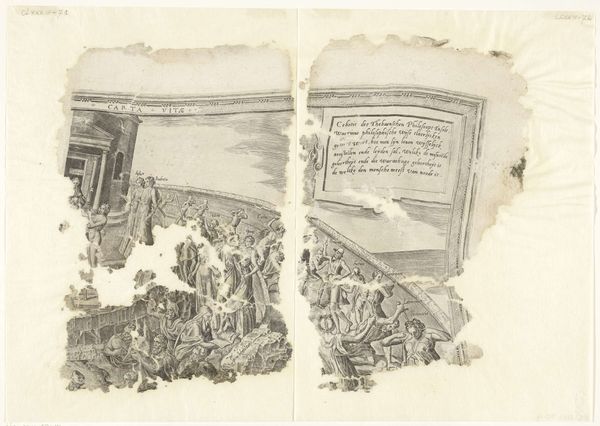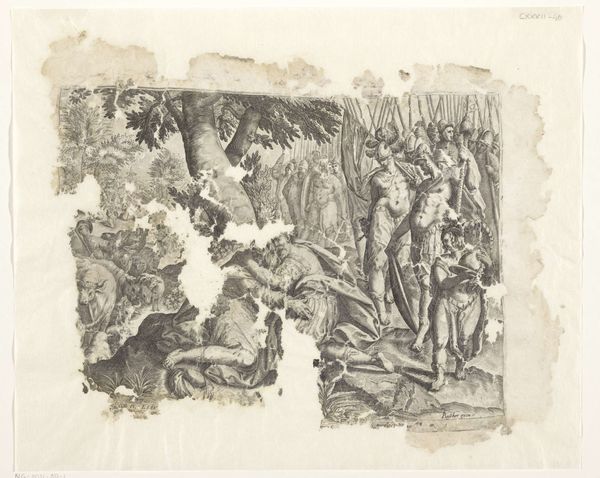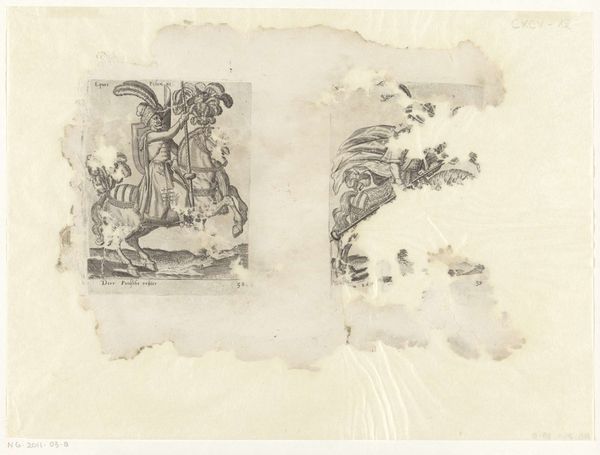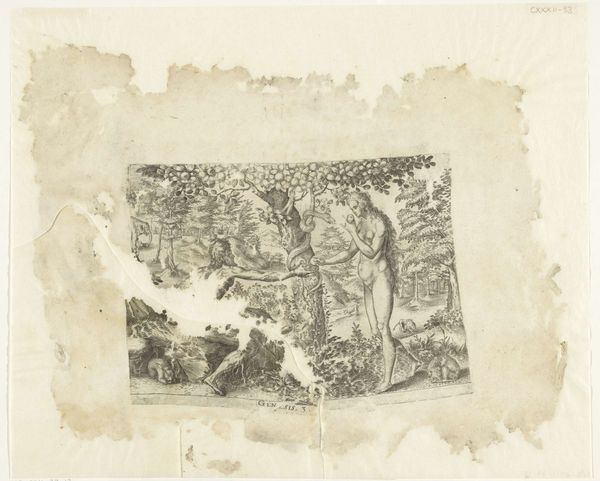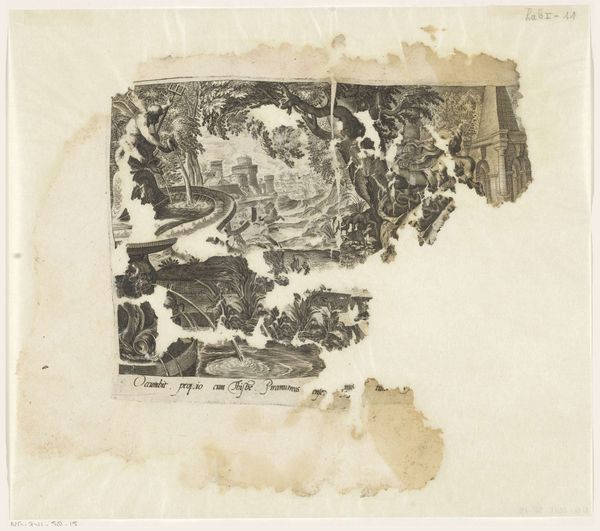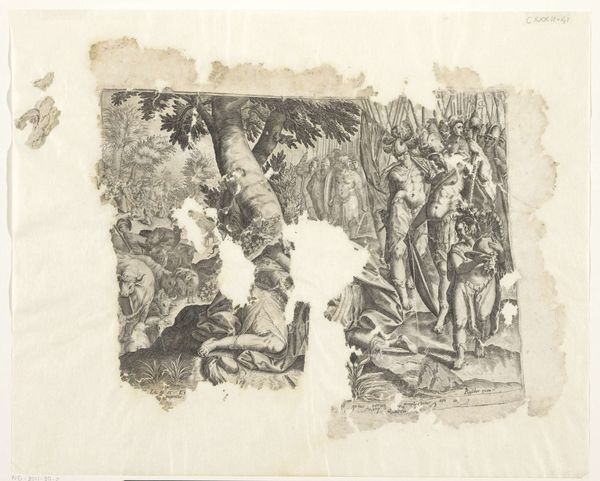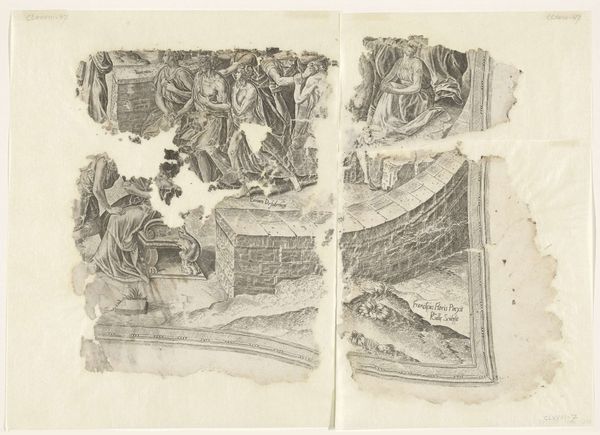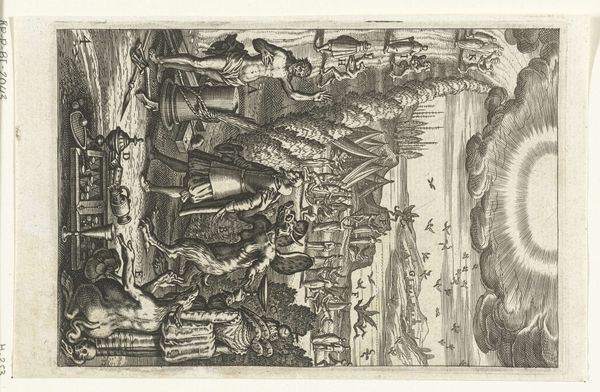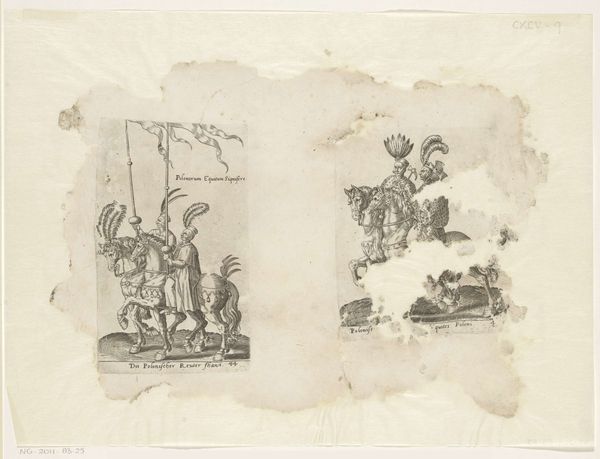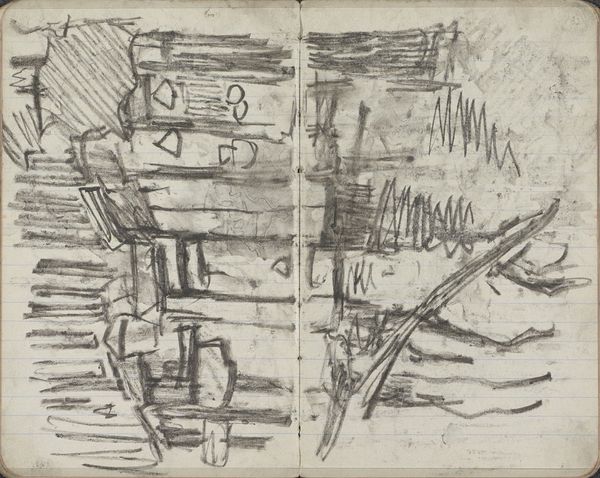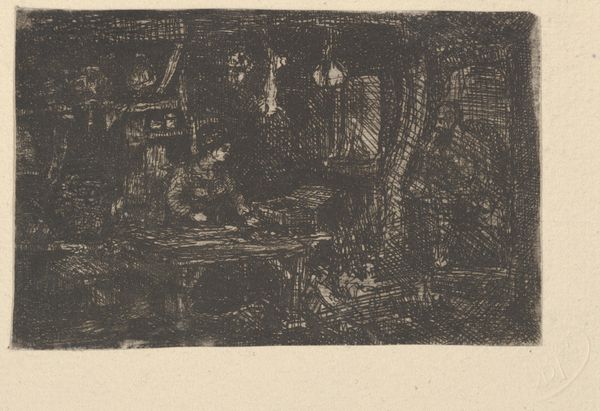
drawing, print, ink, engraving
#
drawing
#
pen drawing
# print
#
11_renaissance
#
ink
#
northern-renaissance
#
engraving
Dimensions: height 284 mm, width 388 mm
Copyright: Rijks Museum: Open Domain
Philips Galle created this damaged engraving, *Linkerbovenhoek van een prent van het tafereel van Cebes*, in the Netherlands in the late 16th century. It depicts the "Tablet of Cebes," an allegorical depiction of life's journey based on a philosophical text. Engravings like this one served a crucial function during the rise of print culture. Galle’s workshop in Antwerp was among the most prolific in Europe. These prints facilitated the transmission of ideas and images across geographical and social boundaries. Galle was deeply involved in the business of disseminating knowledge. He re-published prints by other artists and sold books, playing a key role in the commercialization of art. The engraving reflects humanist ideas that were circulating at the time, such as the importance of virtue and reason in navigating life's challenges. To fully understand the role of prints like these, we can look at the history of the book trade, the development of international markets, and the social and intellectual networks that fostered the exchange of ideas. Art historians can reveal the complex ways in which art reflects and shapes its cultural environment.
Comments
No comments
Be the first to comment and join the conversation on the ultimate creative platform.
